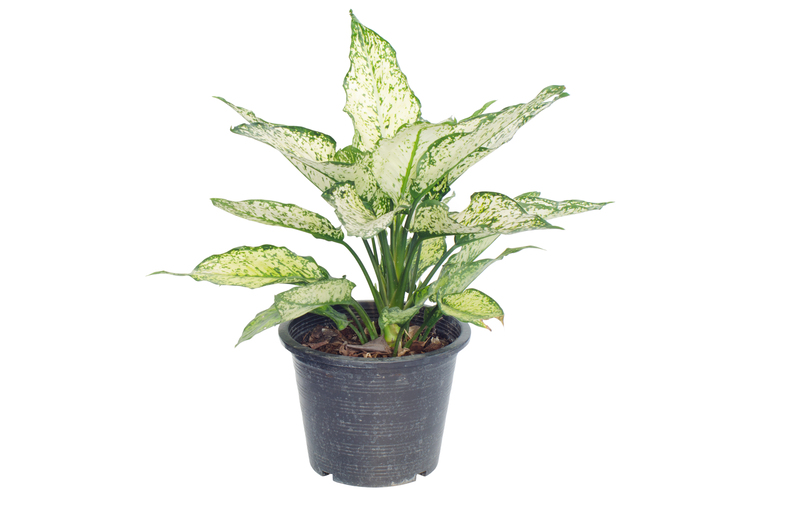Mastering Orchid Care: Essential Tips for Thriving Flowers
Posted on 03/06/2025
Mastering Orchid Care: Essential Tips for Thriving Flowers
Orchids captivate plant enthusiasts worldwide with their exquisite beauty, variety, and exotic charm. Yet, their reputation for being delicate can deter some from bringing these remarkable flowers into their homes. If you've been hesitant or struggled to keep orchids flourishing, fear not. With the right knowledge and attention, mastering orchid care is within your grasp.
In this comprehensive guide, we'll unveil the fundamentals of orchid plant care, explore effective troubleshooting tips, and reveal secrets to nurturing thriving, colorful orchid flowers year after year.
Understanding Orchids: The Basics
Orchids (family: Orchidaceae) are one of the largest, most diverse plant families on Earth, boasting over 25,000 species and more than 100,000 hybrids. They're found across nearly every continent, thriving in rainforests, grasslands, and even deserts. Yet, most of the popular varieties for home cultivation--such as Phalaenopsis (Moth Orchid), Cattleya, Dendrobium, and Oncidium--originate from tropical regions.
Key Characteristics of Orchids
- Epiphytic Nature: Many orchids are epiphytes, growing on trees and deriving moisture and nutrients from the air and rain.
- Roots: Thick, spongy roots designed for rapid absorption and anchoring to bark or moss.
- Unique Flowers: Symmetrical blossoms with intricate patterns, available in a vast array of colors.
- Specialized Leaves: Adapted for light interception and water conservation.
Popular Types of Orchids for Beginners
- Phalaenopsis (Moth Orchid): Easy to care for and blooms last for months--ideal for first-timers.
- Dendrobium: Adaptable and reliable, with prolific flowering habits.
- Cattleya: Renowned for large, fragrant flowers--prefers bright light.
- Oncidium: "Dancing Lady Orchids" with delicate, plentiful blossoms.

The Fundamentals of Orchid Care
Successful orchid care relies on imitating the plant's natural habitat while providing tailored attention. Below are the most vital aspects of orchid flower maintenance and how they impact plant health:
1. Lighting: Striking the Perfect Balance
Light is perhaps the single most important factor for orchid growth and flowering. Most orchids thrive in bright, indirect sunlight. Too much direct sun causes scorched leaves, while too little inhibits flowering.
- Place your orchid near an east- or west-facing window with filtered light.
- If you only have south-facing windows, use sheer curtains to diffuse strong sunlight.
- Observe leaf color: Healthy orchid leaves are vibrant green. Dark green may signal insufficient light, while yellow or red tinge suggests excessive sun.
2. Watering: Less is More
Orchids don't tolerate overwatering. In nature, rainwater drains away quickly, and their roots dry rapidly. Mimic these conditions by following the mantra: water thoroughly but infrequently.
- Water once a week during active growth (spring and summer), or every 10-14 days in winter.
- Use room-temperature, filtered, or distilled water if possible--avoid softened or chlorinated water.
- Let water drain completely to prevent root rot. Never let your orchid sit in standing water.
- Check by sticking a finger into the potting mix; only water when the top inch feels dry.
Tip:
Water in the morning, allowing foliage and crowns to dry throughout the day. This reduces the risk of rot.
3. Humidity: Recreate the Tropical Atmosphere
Most orchids crave humidity levels between 40% and 70%. Central heating tends to dry indoor air, so provide supplemental humidity:
- Use a humidity tray--a shallow tray filled with pebbles and water underneath the pot (not touching the roots).
- Group orchids together, as plants release moisture into the air.
- Mist plants lightly in the morning during dry spells--but avoid wetting the flowers directly.
- Use a room humidifier for consistent results.
4. Temperature: Keep It Consistent
Orchids' ideal temperatures depend on the variety, but most popular "indoor" orchids prefer:
- Daytime: 65-80?F (18-27?C)
- Nighttime: 60-70?F (15-21?C)
- Some require a drop in night temperature (~10?F/5?C) to provoke flower spikes.
Avoid cold drafts, sudden temperature swings, and proximity to heating vents.
5. Potting Medium & Repotting
Orchids require special substrates that encourage airflow and rapid drainage. Never use standard potting soil!
- Use orchid bark, sphagnum moss, perlite, or a blend tailored to the species. Phalaenopsis prefer chunky bark, Oncidiums like finer blends.
- Repot every 1-2 years, or when the medium decomposes and restricts airflow.
- Choose pots with multiple drainage holes or slats--clear pots let you inspect root health.
6. Feeding Orchids: The Right Fertilizer at the Right Time
For lush growth and plentiful blooms, orchids require regular but gentle feeding.
- Use a balanced, water-soluble orchid fertilizer (e.g., 20-20-20 or 30-10-10) at half strength.
- Feed every 2-4 weeks during active growth, and less in winter.
- Flush the potting medium with plain water every month to prevent salt buildup.
Remember: "Weakly, weekly" is a helpful orchid feeding motto.
Bringing Orchids Into Bloom: Advanced Flowering Tips
Getting an orchid to bloom regularly is considered the ultimate test of your skills. Fortunately, with the right care, even novice growers can enjoy a breathtaking display of orchid flowers at home.
Encouraging Flower Spikes
- Ensure a day/night temperature difference: A night drop of 10-15?F is crucial for spike formation in Phalaenopsis and others.
- Increase light levels slightly during the months when flower spikes naturally occur (fall for Phalaenopsis, spring for Cymbidiums).
- Pause fertilizing for 3-4 weeks, then resume once the spike appears.
Aftercare for Blooming Orchids
- Do not move the plant after a flower spike appears; sudden changes can cause buds to drop.
- Stake flower spikes gently for support, using clips or ties.
- Remove faded flowers and clip spent spikes back, leaving 1-2 nodes above the base (for Phalaenopsis).
Common Orchid Problems and Solutions
Even the most diligent growers encounter setbacks. Recognizing the symptoms and acting promptly should keep your orchids healthy and thriving.
1. Yellowing Leaves
- Causes: Overwatering, insufficient light, old age (lower leaves only)
- Fix: Improve drainage, move to a brighter location, trim old leaves only if fully dry.
2. Wrinkled or Shriveled Leaves
- Causes: Underwatering, root rot, low humidity
- Fix: Inspect roots; if brown and mushy, repot and remove damaged tissue. Increase watering moderately and raise humidity.
3. Bud Blast (Buds Drop Never Open)
- Causes: Sudden temperature changes, drafts, low humidity, moving plant when in bud
- Fix: Maintain stable temperature/humidity, avoid moving during budding stage.
4. Slow or No Flowering
- Causes: Not enough light, insufficient temperature drop, over-fertilizing, or new division adapting
- Fix: Review light exposure, try cooler night temps, reduce fertilizer. Sometimes patience is key!
Year-Round Orchid Care Calendar
Successful orchid plant care involves adjusting routines throughout the year:
-
Spring (Growth Begins):
Increase watering and feeding as new leaves and roots appear.
Repot if the medium is breaking down. Watch for pests after winter dormancy. -
Summer (Active Growth):
Maintain high humidity and bright but indirect light. Water regularly, fertilize every 2-3 weeks, mist as needed. -
Autumn (Flower Spikes Appear):
Provide the day/night temperature drop; slightly increase light for spike initiation. Reduce watering as growth slows. -
Winter (Dormancy or Flowering):
Water sparingly, unless flowering. Keep away from cold drafts and heating vents. Enjoy blooms!
Essential Orchid Tools & Supplies
A few simple supplies can help master orchid care at home:
- Orchid bark or moss for appropriate repotting.
- Clear plastic pots with drainage holes.
- Room humidifier or humidity tray.
- Fertilizer formulated for orchids.
- Sharp sterilized scissors or pruners for trimming roots or spikes.
- Spray bottle for misting (as needed).
- Sticky traps or insecticidal soap for pest control.
Tips for Displaying Orchids and Creating an Orchid-Friendly Home
Bring out the best in your orchid flowers by optimizing their placement:
- Group orchids in snug clusters for higher humidity and visual appeal.
- Pair orchids with decorative cachepots, making sure there is always drainage inside the actual growing pot.
- An east- or west-facing windowsill is ideal--but rotate plants gently every few weeks for even growth.
- Scatter a side table or desk with mini orchids (such as jewel orchids) for close-up admiration.
- Introduce orchids into bathrooms with bright, natural light, as the steam increases ambient humidity.
Myths and Mistakes in Orchid Plant Care
A few persistent myths can make orchid care seem daunting. Here's what you can safely ignore:
- Myth: Orchids are too difficult for beginners.
Truth: Many varieties are easier than ferns, succulents, or even roses when you understand their needs. - Myth: Ice cubes are a safe watering method.
Truth: Ice can chill roots and damage tropical orchids. Use room-temperature water instead. - Myth: Orchids must be kept in sealed terrariums.
Truth: Adequate air circulation keeps plants healthy; open pots or well-ventilated locations are better. - Myth: Orchids should be potted in regular soil.
Truth: Most orchids require coarse media (bark, moss) to avoid suffocating their roots.

Frequently Asked Questions About Orchid Care
How often should I repot my orchid plant?
- Repot every 1-2 years, after blooming or when the potting mix breaks down.
- Choose a slightly larger pot if roots are crowded, but avoid "over-potting."
Why are my orchid leaves turning yellow?
- One or two lower leaves turning yellow and falling is normal.
- Multiple yellowing leaves may indicate overwatering, poor drainage, or pests.
Can I grow orchids without a greenhouse?
Absolutely! Many orchids, especially Phalaenopsis and Dendrobiums, thrive in ordinary indoor environments provided they receive bright, indirect light and high humidity.
Should I cut off dead flower spikes?
Yes. For Phalaenopsis, trim spent spikes back just above a visible node--this may prompt a rebloom from the same stem.
Which fertilizer is best for home orchid flowers?
Use a balanced, water-soluble fertilizer labeled for orchids at half strength during the growing season. Occasional flushes with pure water prevent salt buildup.
Conclusion: Cultivating Orchid Success
With patience and attention to their unique needs, orchids can become the crowning jewels of your home or office collection. Remember: orchid care isn't about perfection, but observation and small, timely adjustments.
By mastering the essentials--light, water, humidity, and proper feeding--you'll enjoy long-lasting, vibrant blooms and the joy of a thriving orchid jungle for years to come.
Ready to transform your plant care skills? Start with a Phalaenopsis orchid, follow these orchid care tips, and watch your confidence bloom alongside your flowers!
Happy growing, and may your orchids flourish and inspire!

